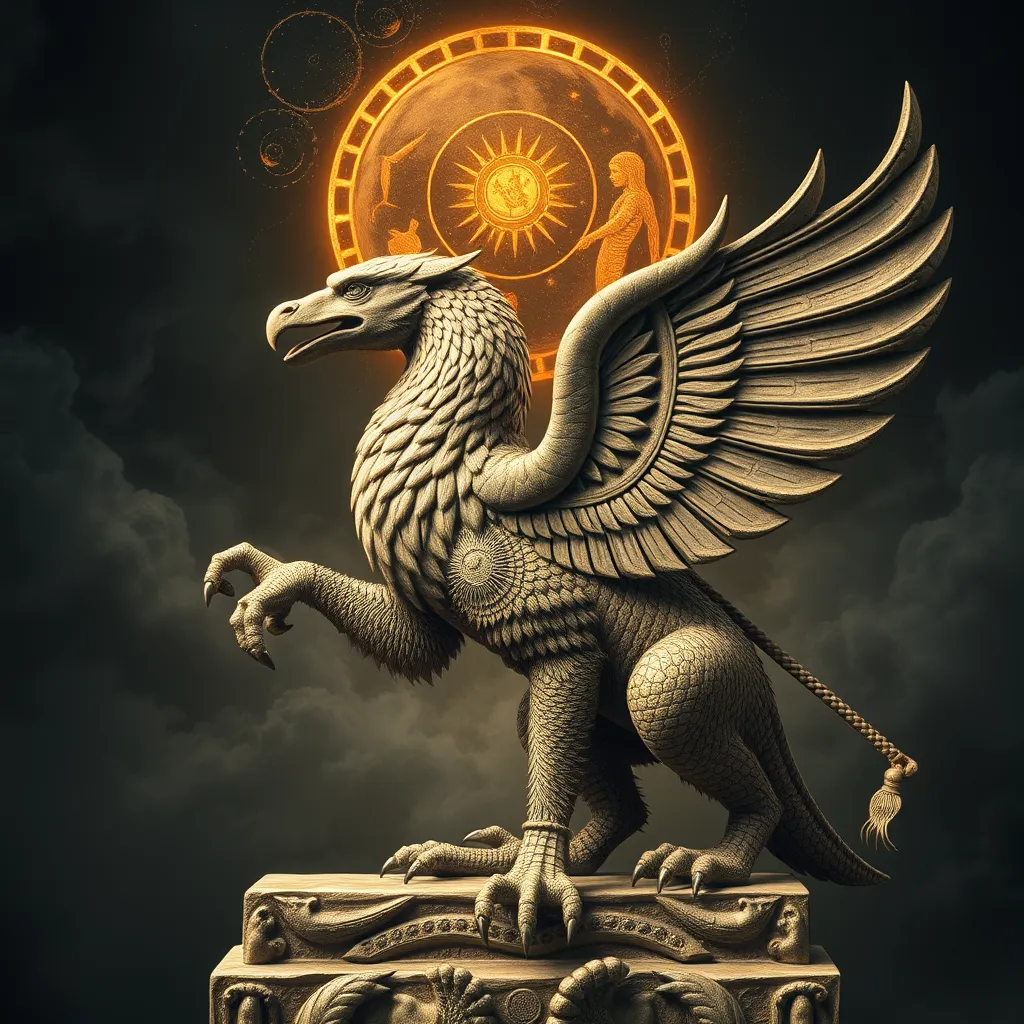The Sphinx in Roman Mythology: A Borrowed Tale
I. Introduction
The Sphinx, a creature with a lion’s body and a human head, has captivated the imagination of various ancient cultures. Its origins trace back to Egyptian mythology, but it gained prominence in Greek myth, where it became a symbol of mystery and enigma. The Sphinx’s significance deepened within Greek mythology, particularly through the famous tale of Oedipus. As the Romans expanded their empire and absorbed Greek culture, the Sphinx transitioned into Roman mythology, adapting to new contexts and interpretations.
II. Origins of the Sphinx in Greek Mythology
A. Description of the Sphinx and its significance
In Greek mythology, the Sphinx is often depicted as a winged creature, combining the strength of a lion with the intellect of a human. It symbolizes the intersection of beastly instinct and human reason, embodying both danger and wisdom. The Sphinx posed riddles to travelers, and those who could not answer were devoured, representing the peril of ignorance.
B. The myth of Oedipus and the Sphinx’s role
One of the most famous myths involving the Sphinx is that of Oedipus. The Sphinx settled near Thebes, posing a riddle to its inhabitants: What walks on four legs in the morning, two legs at noon, and three legs in the evening? Oedipus solved the riddle, answering Man, and subsequently defeated the Sphinx, leading to its demise. This tale illustrates themes of knowledge, fate, and the struggle against monstrous forces.
C. Symbolism of the Sphinx in Greek culture
The Sphinx symbolized the dangers of failing to confront the unknown. It represented the struggle for knowledge and the consequences of ignorance, serving as a reminder of the importance of wisdom in human affairs. As such, it became a prominent figure in Greek art, literature, and philosophy.
III. The Adaptation of the Sphinx in Roman Culture
A. Historical context: Roman conquest of Greek territories
As the Romans expanded their empire, they encountered and absorbed many elements of Greek culture. The conquest of Greek territories led to the integration of Greek mythology into Roman traditions, including the Sphinx’s tale.
B. The influence of Greek mythology on Roman beliefs
Roman religion and mythology were heavily influenced by Greek beliefs. The Sphinx, initially a Greek figure, was adapted into Roman culture, often retaining its original characteristics but gaining new meanings.
C. Changes in the Sphinx’s portrayal and significance
While the Sphinx continued to represent mystery and enigma in Roman culture, its portrayal became less fearful and more as a symbol of wisdom. The Romans emphasized the Sphinx’s role as a guardian of knowledge, aligning it with their values of reason and order.
IV. The Sphinx in Roman Literature
A. Key Roman authors who referenced the Sphinx
Several Roman authors incorporated the Sphinx into their works, including:
- Ovid
- Virgil
- Seneca
B. Analysis of the Sphinx in poetry and prose
In Roman literature, the Sphinx often appears in contexts that explore themes of knowledge, fate, and the human condition. Ovid’s works, for instance, reflect on the duality of the Sphinx as a creature of both danger and wisdom.
C. Comparison of Roman and Greek literary depictions
While Greek literature often focuses on the Sphinx’s terror and riddles, Roman adaptations tend to highlight its wisdom and role as a guardian. This shift reflects the Roman emphasis on rationality and order over chaos.
V. Artistic Representations of the Sphinx in Roman Art
A. Visual depictions in sculpture and mosaics
The Sphinx was a popular subject in Roman art, depicted in various forms such as sculptures, frescoes, and mosaics. Artists often portrayed the Sphinx in a more benevolent light compared to its Greek counterparts.
B. The Sphinx as a motif in Roman architecture
The Sphinx also influenced Roman architecture, where it was used as a decorative element in temples and public buildings. Its presence in architecture symbolized the integration of Greek influences into Roman design.
C. The Sphinx’s symbolic meanings in art
In Roman art, the Sphinx symbolized protection and the safeguarding of knowledge. Its depictions often conveyed a sense of stability and wisdom, reflecting Roman values.
VI. The Sphinx’s Role in Roman Religion and Rituals
A. Integration of the Sphinx into Roman religious practices
The Sphinx found its way into Roman religious practices, often associated with rituals that emphasized the search for knowledge and divine truth. It was sometimes included in ceremonies that sought to gain favor from the gods.
B. The Sphinx in mythology and its relation to Roman deities
Although the Sphinx was not a central figure in Roman mythology, it was sometimes linked to deities associated with wisdom and knowledge, such as Minerva, the goddess of wisdom.
C. Ritual significance of the Sphinx in ancient Rome
The Sphinx’s role in rituals often involved themes of enlightenment and the pursuit of truth, reflecting the Roman value placed on knowledge and intellectual growth.
VII. Legacy of the Sphinx in Later Cultures
A. The Sphinx’s influence on medieval and Renaissance art
The Sphinx’s legacy continued into the medieval and Renaissance periods, where it became a symbol of mystery and the unknown. Artists drew inspiration from its enigmatic nature, incorporating it into their works.
B. Revival of interest in the Sphinx during the Enlightenment
During the Enlightenment, the Sphinx was revisited as a symbol of knowledge and reason. Scholars and artists alike sought to explore its meanings in relation to human understanding and the quest for truth.
C. Modern interpretations and representations of the Sphinx
In contemporary culture, the Sphinx is often depicted in various forms of media, from literature to film. It continues to represent the quest for knowledge and the mysteries of existence.
VIII. Conclusion
The Sphinx’s evolution from Greek to Roman mythology illustrates the adaptability of mythological narratives. Its journey reflects the cultural exchanges that occurred during the Roman Empire and highlights the enduring fascination with the Sphinx as a symbol of mystery and wisdom. As we explore the significance of the Sphinx throughout history, we gain insight into the human condition and the timeless quest for knowledge.



